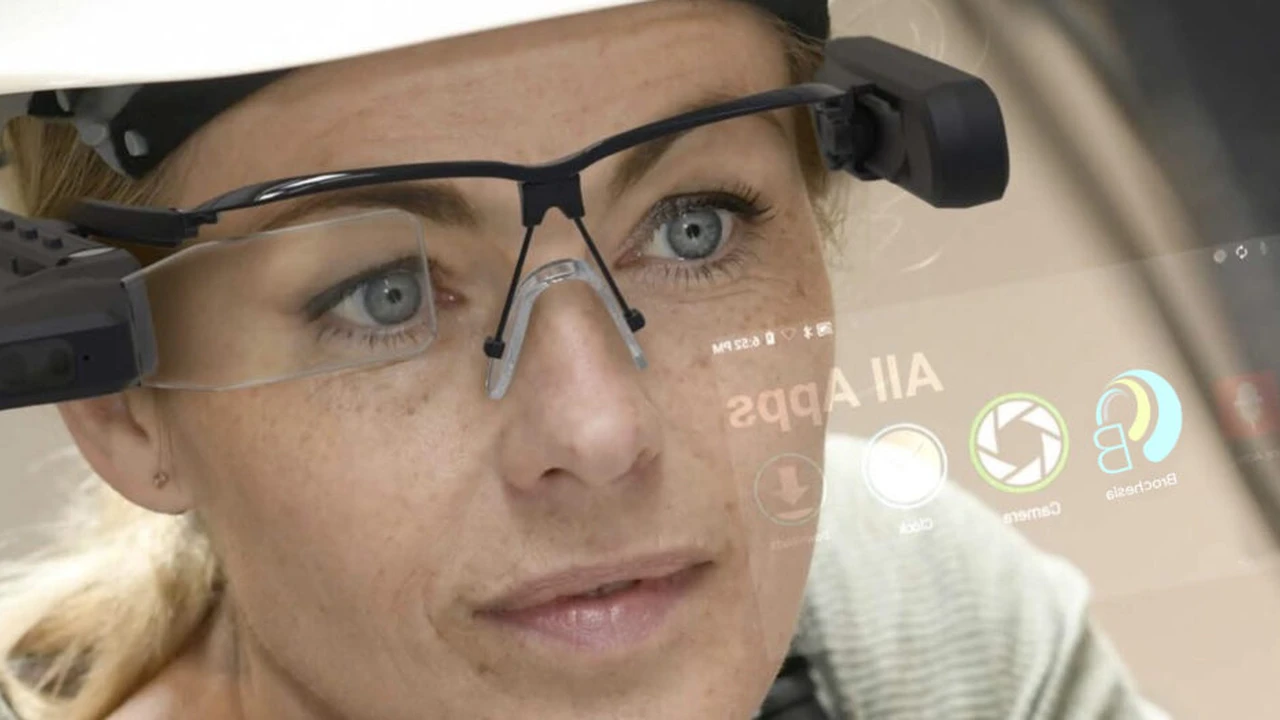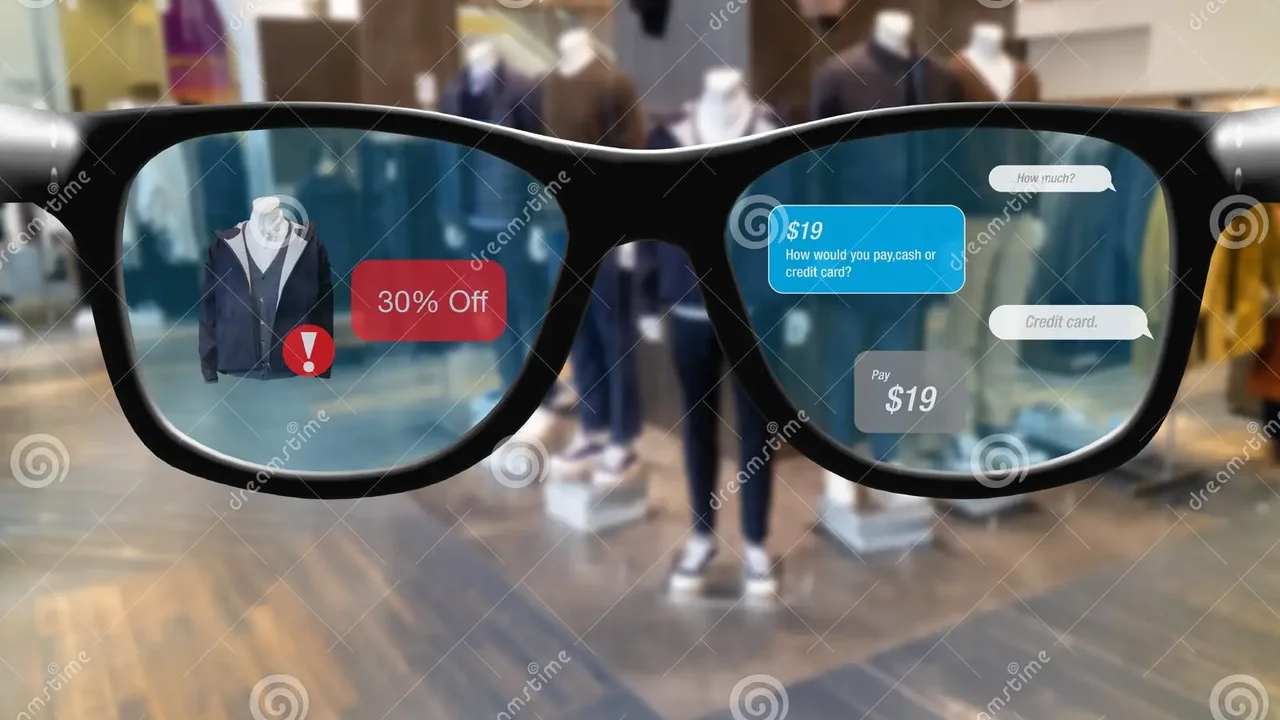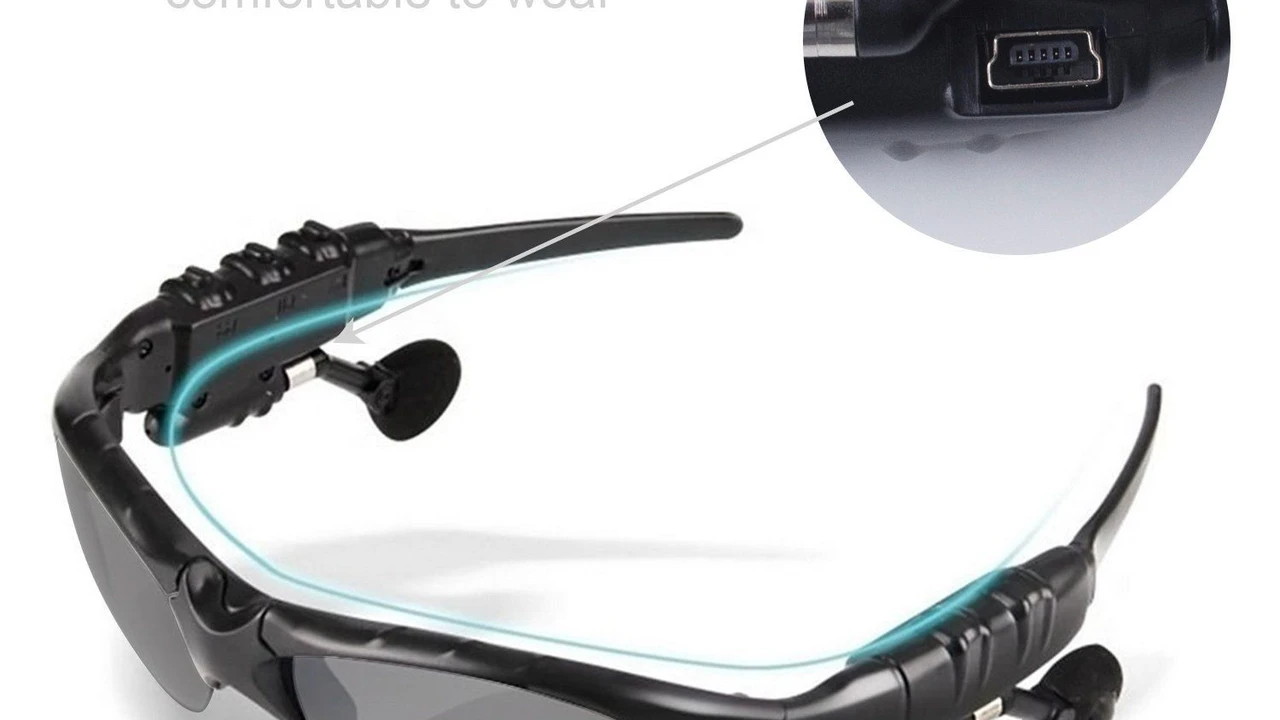Best Smart Glasses for Augmented Reality Experiences
Dive into AR with the best smart glasses for augmented reality, offering seamless integration and stunning visuals.

Best Smart Glasses for Augmented Reality Experiences
Understanding Augmented Reality Smart Glasses Technology
Before we dive into specific products, let's briefly touch upon what makes AR smart glasses tick. At their core, these devices combine advanced optics, powerful processors, and sophisticated sensors to project digital content directly into your field of vision. This content can range from simple notifications and navigation cues to complex 3D models and interactive games. Key technologies include waveguide displays, micro-LED or OLED projectors, spatial tracking, and often, integrated cameras for environmental understanding. The goal is to create a seamless blend of the digital and physical worlds, making the virtual elements feel as if they are truly present in your environment.Top AR Smart Glasses for Immersive Visuals and Seamless Integration
When it comes to experiencing AR, visual quality and how well the digital content integrates with your real world are paramount. Here are some of the leading smart glasses that excel in these areas:Nreal Air Smart Glasses: Immersive Display and Portability
Nreal Air has quickly become a popular choice for consumers seeking an immersive AR experience without the bulk of traditional headsets. These glasses are designed to be lightweight and comfortable, resembling a pair of stylish sunglasses. They project a large, vibrant virtual screen into your view, making them ideal for media consumption, cloud gaming, and even productivity on the go.Key Features:
- Display: Dual OLED displays, offering a 130-inch virtual screen at 4 meters or a 201-inch virtual screen at 6 meters. This provides a truly cinematic experience.
- Resolution: 1920x1080 per eye, ensuring crisp and clear visuals.
- Field of View (FOV): 46 degrees, which is decent for media consumption and casual AR.
- Connectivity: Connects via USB-C to compatible smartphones, tablets, and laptops.
- Audio: Integrated directional speakers, with the option to connect external headphones.
- Weight: Approximately 79 grams, making them very comfortable for extended wear.
Ideal Use Cases:
- Watching movies and TV shows on a large virtual screen.
- Cloud gaming (e.g., Xbox Cloud Gaming, GeForce Now) on a portable display.
- Productivity tasks, using your phone or laptop as a trackpad/keyboard.
- Casual AR applications and experiences.
Comparison and Pricing:
Compared to more enterprise-focused AR glasses, Nreal Air prioritizes media consumption and portability. Its price point is also significantly more accessible, typically ranging from $379 to $399 USD. While it doesn't offer full spatial computing like some higher-end models, its excellent display and ease of use make it a fantastic entry point into personal AR.
XREAL Light (formerly Nreal Light): Advanced Spatial Computing for Developers and Enthusiasts
While Nreal Air focuses on media, the XREAL Light (formerly Nreal Light) offers a more robust AR experience with 6DoF (six degrees of freedom) tracking, allowing for true spatial computing. This means virtual objects can be anchored in your physical space and interacted with more naturally. It's a favorite among developers and AR enthusiasts looking to build and experience more complex AR applications.Key Features:
- Display: Dual OLED displays, similar to Nreal Air, but optimized for AR interactions.
- Resolution: 1920x1080 per eye.
- Field of View (FOV): 52 degrees, slightly wider than Nreal Air, enhancing the immersive AR experience.
- Tracking: 6DoF spatial tracking, enabling virtual objects to stay fixed in the real world.
- Connectivity: Connects via USB-C to compatible Android smartphones (with Nebula OS) or a dedicated computing unit.
- Cameras: Multiple cameras for environmental understanding and hand tracking.
- Weight: Approximately 106 grams.
Ideal Use Cases:
- Developing and testing AR applications.
- Experiencing interactive AR games and educational content.
- Productivity with multiple virtual screens anchored in your space.
- Professional applications requiring spatial interaction.
Comparison and Pricing:
XREAL Light is a step up from Nreal Air in terms of AR capabilities, offering true spatial computing. It's more geared towards developers and users who want to engage with AR content that interacts with their environment. The price is higher due to its advanced tracking and processing capabilities, typically around $599 USD. It's a great choice for those ready to dive deeper into interactive AR.
Microsoft HoloLens 2: Enterprise-Grade Mixed Reality
While technically a mixed reality (MR) headset, the HoloLens 2 is a powerhouse for enterprise AR applications. It's not designed for casual consumer use but rather for industrial, medical, and educational sectors where precise spatial interaction and collaboration are critical. It offers an untethered experience with advanced hand tracking and eye tracking.Key Features:
- Display: Laser-based holographic displays.
- Resolution: 2K resolution per eye.
- Field of View (FOV): 43 degrees horizontal, 29 degrees vertical, providing a wider view than its predecessor.
- Tracking: 6DoF spatial tracking, advanced hand tracking, and eye tracking.
- Connectivity: Wi-Fi, Bluetooth, USB-C. Fully untethered.
- Audio: Built-in spatial audio.
- Weight: Approximately 566 grams.
Ideal Use Cases:
- Remote assistance and collaboration in industrial settings.
- Medical training and surgical planning.
- Design and prototyping in engineering and architecture.
- Educational simulations and immersive learning.
Comparison and Pricing:
The HoloLens 2 is in a league of its own when it comes to enterprise-grade mixed reality. Its untethered nature, robust tracking, and integration with Microsoft's ecosystem make it invaluable for professional applications. However, its price reflects its advanced capabilities and target market, starting at around $3,500 USD. This is not a consumer device but a powerful tool for businesses and researchers.
Magic Leap 2: High-Performance AR for Professional Applications
Magic Leap 2 is another strong contender in the professional AR space, designed for enterprise use cases that demand high performance and visual fidelity. It offers a larger field of view and dynamic dimming, allowing for better contrast and visibility of virtual content in various lighting conditions.Key Features:
- Display: Proprietary waveguide optics with dynamic dimming.
- Resolution: 1440x1760 per eye.
- Field of View (FOV): 70 degrees diagonal, one of the widest available for AR glasses.
- Tracking: 6DoF spatial tracking, eye tracking, and hand tracking.
- Connectivity: Tethered to a compute pack for enhanced processing power.
- Audio: Integrated spatial audio.
- Weight: Approximately 260 grams (headset only).
Ideal Use Cases:
- Medical visualization and surgical guidance.
- Industrial training and remote expert assistance.
- Design and engineering visualization.
- Research and development in AR.
Comparison and Pricing:
Magic Leap 2 competes directly with HoloLens 2 in the enterprise market, offering a larger FOV and dynamic dimming for superior visual quality in challenging environments. Its tethered compute pack allows for more powerful processing. The price point is similar to HoloLens 2, typically around $3,299 USD, positioning it as a premium tool for professional AR applications.
Vuzix Blade 2: Smart Glasses for Frontline Workers and Information Overlay
Vuzix Blade 2 is designed with frontline workers and professionals in mind, focusing on providing hands-free access to information and communication. It's more about overlaying critical data and notifications rather than fully immersive AR experiences, making it practical for various industrial and logistical applications.Key Features:
- Display: Waveguide optics with a full-color display.
- Resolution: WVGA (854x480) resolution.
- Field of View (FOV): 28 degrees diagonal.
- Tracking: 3DoF head tracking.
- Connectivity: Wi-Fi, Bluetooth, USB-C. Runs on Android OS.
- Camera: 8-megapixel camera for photos and videos.
- Weight: Approximately 85 grams.
Ideal Use Cases:
- Remote assistance and expert guidance in field service.
- Warehouse logistics and inventory management.
- Healthcare information access and patient data display.
- Hands-free communication and notification delivery.
Comparison and Pricing:
Vuzix Blade 2 is a more practical and rugged option for specific professional use cases where information overlay and communication are key. It's less about immersive AR and more about utility. Its price point is more accessible than HoloLens or Magic Leap, typically around $1,299 USD, making it a cost-effective solution for businesses looking to equip their workforce with smart glasses.
Factors to Consider When Choosing AR Smart Glasses
Selecting the best AR smart glasses depends heavily on your intended use. Here are some crucial factors to keep in mind:Field of View (FOV) and Display Quality
The FOV determines how much of the virtual content you can see at once. A wider FOV generally leads to a more immersive experience, but it often comes with a higher price tag and potentially more bulk. Display quality, including resolution, brightness, and color accuracy, is also vital for clear and vibrant visuals. For media consumption, a high-resolution, large virtual screen is key. For interactive AR, a wider FOV is more beneficial.
Tracking Capabilities (3DoF vs 6DoF)
3DoF (three degrees of freedom): This allows you to look around in a virtual environment, but the virtual objects remain fixed relative to your head. Think of it like watching a movie on a virtual screen that moves with your head. Devices like Nreal Air primarily offer 3DoF for their virtual screen mode.
6DoF (six degrees of freedom): This is crucial for true AR experiences. It allows virtual objects to be anchored in your physical space and remain there even as you move around them. You can walk closer to a virtual object, peek around it, and interact with it as if it were truly present. HoloLens 2, Magic Leap 2, and XREAL Light offer 6DoF tracking.
Comfort and Design
Since you'll be wearing these glasses on your face, comfort is paramount. Consider the weight, balance, and how well they fit. Some smart glasses resemble traditional eyewear, making them more discreet and suitable for everyday wear, while others are more robust and designed for specific industrial environments. If you plan to wear them for extended periods, lighter and well-balanced designs are preferable.
Connectivity and Compatibility
How do the smart glasses connect to other devices? Some are tethered to a smartphone or a dedicated compute pack, while others are fully untethered. Check compatibility with your existing devices (e.g., Android phones, iPhones, Windows PCs) and ensure the operating system supports the applications you intend to use.
Battery Life
AR applications can be power-intensive. Consider the battery life of the smart glasses, especially if you plan to use them for extended periods without access to charging. Some models offer external battery packs for longer usage.
Ecosystem and App Availability
The utility of AR smart glasses largely depends on the available applications and the developer ecosystem. Some platforms have a rich selection of consumer apps, while others are more focused on enterprise solutions. Research the app store or developer community associated with the smart glasses you're considering.
Price and Value Proposition
AR smart glasses range widely in price, from a few hundred dollars for consumer-focused models to several thousands for enterprise-grade devices. Determine your budget and assess the value proposition based on your specific needs and intended use cases. Don't overspend on features you won't use, but also don't underspend if you require advanced capabilities.
The Future of Augmented Reality in Smart Glasses
The AR smart glasses market is still in its early stages, but it's evolving rapidly. We can expect to see significant advancements in the coming years, including:- Smaller and Lighter Designs: As technology miniaturizes, smart glasses will become even more indistinguishable from regular eyewear.
- Wider Fields of View: Improved optics will allow for more expansive and immersive AR experiences.
- Enhanced Processing Power: More powerful chips will enable more complex and realistic AR applications directly on the device.
- Improved Battery Life: Advancements in battery technology will lead to longer usage times.
- More Intuitive Interactions: Hand tracking, eye tracking, and brain-computer interfaces will become more sophisticated, offering seamless interaction with virtual content.
- Broader Consumer Adoption: As prices come down and killer apps emerge, AR smart glasses are poised for mainstream adoption.
The journey of augmented reality is just beginning, and smart glasses are the key to unlocking its full potential. Whether you're a developer, a professional, or simply an enthusiast looking to experience the next frontier of computing, there's an AR smart glass out there for you. By carefully considering your needs and the factors outlined in this guide, you can make an informed decision and step into a world where digital information seamlessly blends with your reality.
:max_bytes(150000):strip_icc()/277019-baked-pork-chops-with-cream-of-mushroom-soup-DDMFS-beauty-4x3-BG-7505-5762b731cf30447d9cbbbbbf387beafa.jpg)






